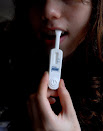On August 24 the CDC announced new recommendations for testing for the coronavirus. They said that there is no need for testing if someone is asymptomatic, even if that person has come into contact with someone who has the infection.
Of course, this change serves the political goals of President Trump perfectly, since he has repeatedly asserted that with fewer tests the U.S. would have fewer cases. I have a granddaughter who loved playing a game where, if she closed her eyes, I would disappear. By the time she was four or five, though, she knew it was just a game and that I really didn't disappear. That lesson seems to have been lost on the president.
But back to the CDC. Adm. Brett Giroir (an old friend whose integrity I've never had reason to question) says there was no political pressure: "We all signed off on it, the docs, before it ever got to a place where the political leadership would have, you know, even seen it, and this document was approved by the task force by consensus." The medical community outside the CDC, however, has been pretty close to unanimous in rejecting this latest guidance. The former head of the CDC, Dr. Tom Frieden summed up the response from outside the Washington Beltway: the guidance change is "unexplained, inexplicable, probably indefensible.”
There are two competing narratives out there, and there is no reason both couldn't be be true.
- This is a politically driven change pushed by the White House, HHS, and political actors on the coronavirus task force to make the president look good. Brett Giroir denies this, though he has confirmed that once "the docs" signed off the change made its way into the political process. Sheryl Gay Stolberg of the NY Times reports that "[t]wo federal health officials said the shift came as a directive to the Atlanta-based C.D.C. from higher-ups in Washington at the White House and the Department of Health and Human Services." That still allow for the possibility that the politicos "directed" the CDC to make a change after it was presented to them by "the docs."
- This new guidance is an attempt to ration tests, which are still drastically and acutely in short supply, to those who are most likely to be contagious. As has been reported throughout the summer, it can take days to get tested and weeks to get test results back due to the backlog in properly equipped testing facilities.
But to say that asymptomatic individuals don't need to be tested masks the rationing effort with a veneer of pseudoscience that is being widely criticized. Asymptomatic individuals can still be infected and can spread the virus without knowing they are infected. Testing addresses that real risk. What we need is honesty about what's really going on.
Especially against a backdrop of on-again, off-again advice from the White House task force and CDC, this couldn't have been handled more ineptly. But it's not just the messaging that's off. Behind the altered guidance is the reality that our testing program, by any measure, has been a disaster.




















